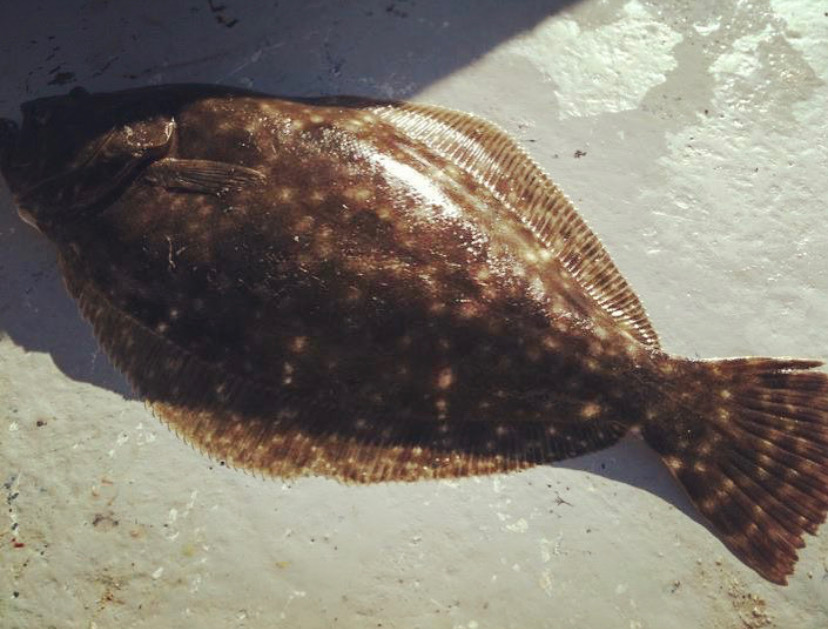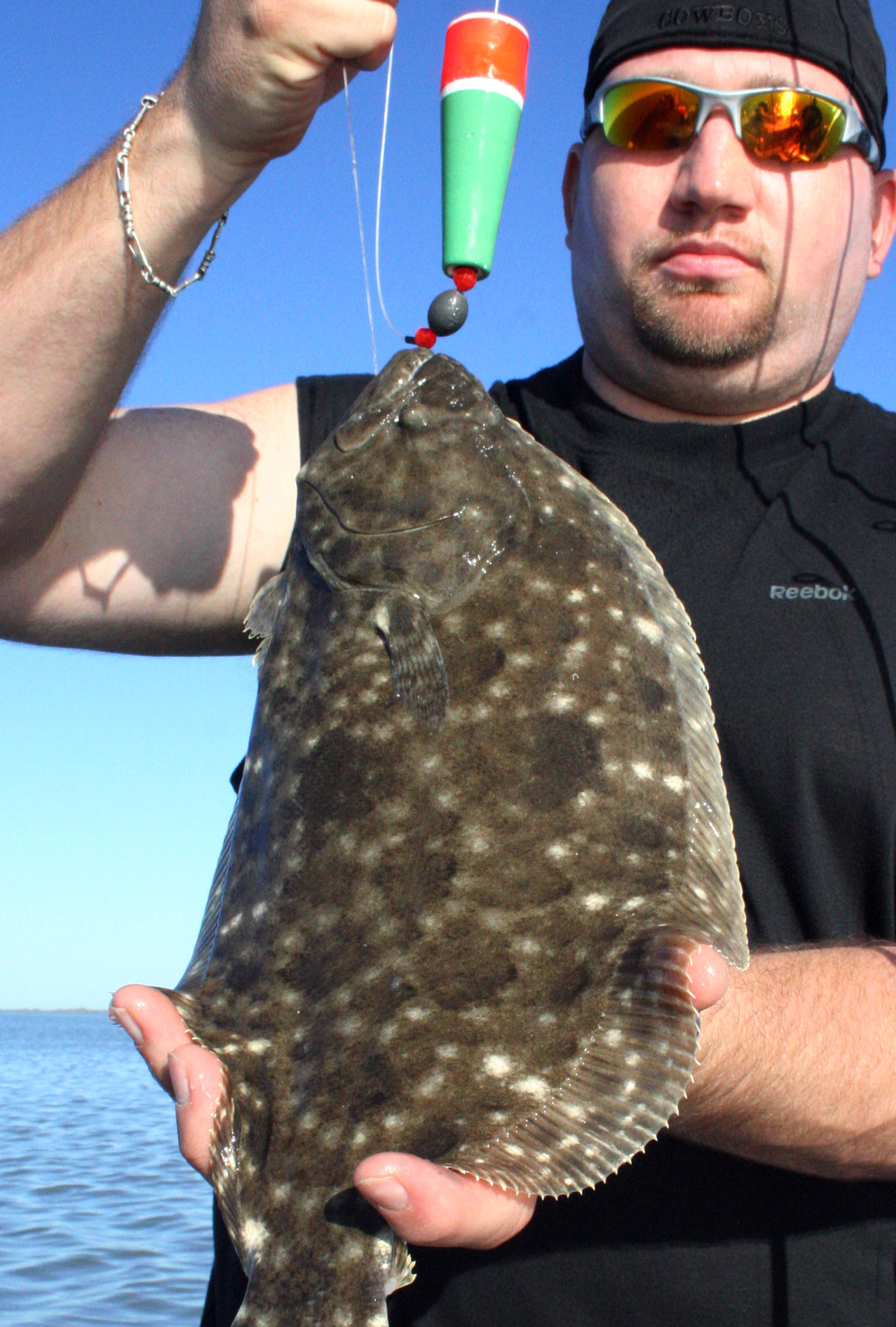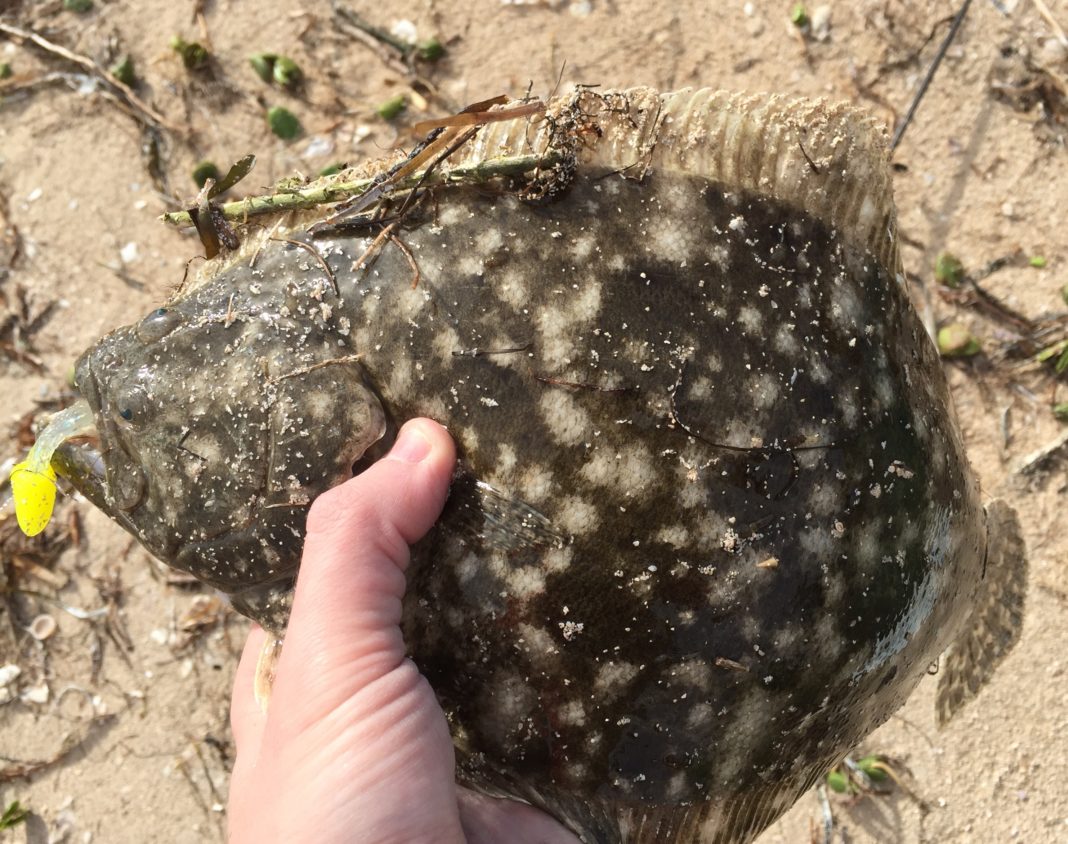
Texas has hundreds of miles of coastline and numerous diverse bay systems, but if you had to pick one particular body of water and species to target in September, look no farther than the shallow waters of Aransas Bay for flounder.
Flatfish always are a welcome addition to a daily bag limit when you’re wading during the summer looking for hefty redfish and speckled trout, but this time of year they’re a common sight in many areas if you know where to look.
Make no mistake, if you’re looking for the prime flounder honey holes, you’d be best-served heading to piers, passes and jetties on the Gulf of Mexico side. However, those areas near shore often get crowded with anglers — especially on weekends — making the entirety of Aransas Bay a good place for floundering.
Aransas Bay features a vast and diverse ecosystem and is huge, covering more than 200 square miles. The bay’s average depth is shallower than other bays in Texas, featuring hundreds of thousands of acres of sea grass beds, oyster reefs and other natural fish attractors that help concentrate reds, specks and black drum when bait is also circling up. Those locales also offer excellent habitat for flounder, which use their natural camouflage and body shape to hide out from prying eyes, while also allowing this ambush predator to thrive.
Aransas Bay is separated from the Gulf of Mexico by San Jose Island (aka St. Joseph Island or as locals call it, St. Joe’s) and has several notable cities nearby. Aransas Pass and Port Aransas are located at the southern end of the bay with Rockport on the central western shore. The bay is extended by Redfish Bay to the southwest, Copano Bay to the west, Saint Charles Bay to the north and Mesquite Bay to the northeast.
That’s a ton of water, and with increasing fishing pressure from guides, weekend anglers and especially winter Texans, expect to be joined by plenty of folks. However, Aransas Bay offers an endless supply of natural flounder habitat, including drains, sloughs, drop-offs and other fish-holding spots that are readily available to any and all willling anglers. Having a bay boat or airboat definitely makes it easier to cover lots of ground, but there are myriad options for both kayak and shore-based anglers.

Saltwater anglers in Texas as a whole enjoy healthy flounder bag limits for most of the year. One large alteration to flounder fishing – effective as of Sept. 1, 2020 – is the minimum length requirement, which is 15 inches. The previous minimum was 14 inches and was changed after being adopted by the Texas Parks & Wildlife Commission in May. Anglers still are allowed to keep five fish and there’s no maximum size limit.
It should be noted that there is a change to the bag limits in November and the first two weeks in December that coincides with the annual migration of flounder (“flounder run”) as they move to offshore waters during the peak of their spawning season. From Nov. 1-30, the daily bag limit is two fish and flounder may be taken only by pole and line only. From Dec. 1-14, the daily bag limit is two fish and flounder may be taken by any legal means, including gigging. The possession limit is equal to the daily bag.
If you’re looking for good intel on the current flounder fishery in Texas, you need look no further than what Texas Parks & Wildlife has to say about the history of flatfish in the past.
Here’s an excerpt from a TPWD report detailing the flounder in the Lone Star State: “Many fishermen can remember the old flounder runs and think that the runs now just aren’t what they used to be. It is true that flounder populations have decreased since the late ’70s measured by the catch per hour of flounder collected in Texas Parks & Wildlife gill net surveys. However, bag seine catch rates show that recruitment, or influx of young-of-the-year flounder, has been fairly steady over time.
“The decreasing population trend despite steady recruitment indicates that fishing mortality is most likely the cause of the population decrease. During the early 1980s red drum and spotted seatrout were given game fish status, which unfortunately also resulted in increased fishing pressure on flounder. Bycatch of young flounder in the shrimp trawl fishery has also had a negative impact on flounder populations.
“In order to try to counter declines in the flounder population, Texas Parks & Wildlife has implemented a number of management changes. In the late 1980s commercial netting was banned. The shrimp limited entry program, started in 1995, should also reduce flounder bycatch and benefit flounder populations. Flounder size and bag limits were also implemented — with the latest occurrence in 1998. The flounder population has stabilized since these changes and has not experienced a significant decrease since then. While this is a good indication that flounder populations might be improving, Texas Parks & Wildlife will continue to assess flounder status.”
Texas inshore saltwater fishing outstanding during fall, winter months
As a whole, flounder fishing in Texas remains good, and according to TPWD, there are indicators that resident populations are stable in numerous bay systems. It also should be noted, according to TPWD, that “studies have shown that between spawning migrations, flounder only move a short distance and typically return to the same bay they came from.” That’s good news for anglers targeting flatfish specifically, which brings me back to fishing the Aransas Bay system for flounder and the thought that knowing how they react and where they like to hide is vital to catching them.
There are numerous rigs that can be counted on to supply regular catches of flounder, and if you know the contour and makeup of the bottom in areas where they congregate, and what they prefer in their diet, you’ll increase your odds of bringing home what many consider the best table fare on the Texas coast.
Juvenile founder eat small worms, small crustaceans and small fish, but as they grow larger, they turn to shrimp and small fish as their primary food source. Knowing this, you can rely on a number of rigging and lure and bait options to find them. If you had to pick a single flounder-fishing rig for a number of conditions, you should look toward a tried and true bass fishing setup. The Carolina rig is a staple in the tournament bass fishing scene, allowing anglers to specifically target fish on the bottom of the water column. This rig is pretty simple, featuring a weight that’s fixed above some type of lure suspended below on a length of leader tied to a swivel. The weight allows the rig to sit on the bottom while the lure flutters and spins in the current, making it enticing to almost any hungry fish species that’s at or near the bottom.
This “fish-finder” rig can be tailored to any lure or natural bait offering for flounder. You can tie on curly-tail grubs, paddletails, Gulp! and other plastic lures or even use live or dead shrimp and live mullet or cut bait on a Carolina rig to entice even the most finicky flounder. Regardless of which option you choose, plan on letting flounder take the bait fully and essentially setting the hook themselves before you attempt to bring them in. Usually they’ll swallow whatever you present quickly, but they also may chew on your bait offering for a bit, resulting in a missed hookset if you jerk the bait from them.
While the Carolina rig is probably the easiest route for targeting the bottom-dwelling species, there are plenty of other artificial options that will work, too. Despite the connotation that flounder simply lay on the bottom waiting for something to come by, they also will come up to the surface to lay siege to whatever they deem worthy. I’ve caught flounder on spoons dragged above sandy drop-offs and in a foot of water on DOA shrimp while I was targeting redfish.
Another common flounder approach from Texas to Florida is to free-line jigs and other artificial lures on the bottom tipped with a piece of shrimp. Another good rule of thumb is to look for feeding birds and baitfish activity, especially near drains and sloughs. Flounder won’t be far behind, hoping to catch the remnants of anything that falls to the bottom. Flounder also will congregate along points and channels where tidal areas cinch down and have good current, and if you find one, keep fishing that area because there are sure to be more flatfish nearby. Flounder also will hollow out sandy areas in places they find good for ambush so be wary and seek out those locales.
Crabbing along Texas coast geared toward simplicity, fun, food
Texas State Record Flounder
The current state record flounder caught on rod and reel was landed in February 1976 from Sabine Lake. That fish was 28 inches long and weighed a robust 13 pounds. The overall state record was a 14.5-pound fish measuring 34.5 inches that was taken by gig in December 2002 from the Gulf of Mexico.
From Texas Parks & Wildlife Department reports
Flounder: Did You Know?
Flounder spawn offshore in waters between 98-217 feet deep when they reach 2 years of age. Young flounder that do not migrate to the Gulf, spend the winter in deep holes and channels. Each female can spawn up to 13 times a season and can produce around 29,000 eggs per spawn. Females release their eggs into the currents and the males then fertilize the eggs. After the eggs hatch, flounder larvae are symmetrical with their eyes on both sides of their body. As the flounder grows in size the right eye migrates to the left side of its head. When the flounder reaches half an inch in length, the eye has finished its migration. Larval and juvenile flounder drift with the currents into the bays and estuaries in the spring. Postlarval flounder seek out lower salinity areas in the spring but return to higher salinity offshore areas in the winter as they approach one year in age and nearly a foot in length.
From Texas Parks & Wildlife Department reports




















[…] Texas fishing calendar: In September head to Aransas Bay for flounder […]
Good information for a guy who fished his whole life in fresh water for Walleye, smallmouth and yellow perch. I’m going to Rockport area to retire and need all the help I can get. Thank You.